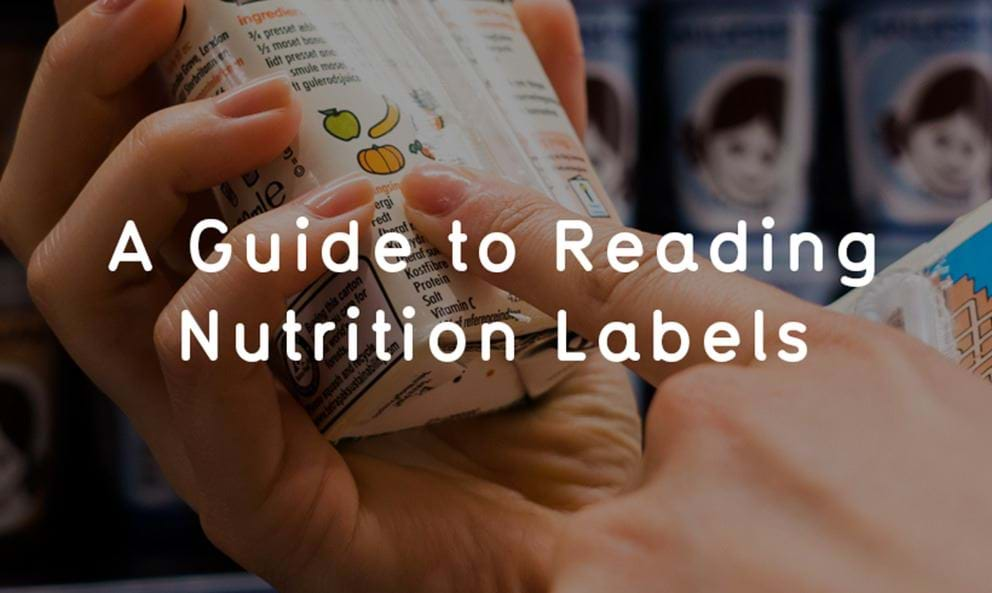Your Guide to Reading Nutrition Labels

Nutrition labels are likely to be found on just about everything you buy at the shop, from packaged fruit and veg, to suspicious ready meals (though it’s worth remembering that foods do not necessarily have to state nutritional content unless there is a claim, e.g. low fat/salt).
If you’re not sure how to decipher these labels, they can seem a bit confusing or even pointless. Rest assured, though, there’s essential information for you to be aware of.
Here’s what you need to know.
Kilojoules and Kilocalories
You’ll notice that your nutrition label has an “energy” section which includes two sets of numbers. One of these will end with “Kj” standing for “kilojoules,” and the other will end with “Kcal” standing for “kilocalories.”
As you might have guessed, both of these are units used to measure energy.
According to the science behind these things, a kilocalorie is the amount of energy required to heat 1 litre of water by 1 degree Celsius, while a calorie is the amount of energy required to heat 1 millilitre of water by 1 degree Celsius. Despite this, kilocalories are always referred to “calories” in day-to-day speech.
If a diet guide tells you to cut 500 calories out of your diet, what it really means is 500 kilocalories.
Kilojoules are less commonly referred to in relation to food, as a rule, but some countries will use them as the preferred unit of measurement.
Macronutrients
You won’t find a “macronutrient” section on your nutrition label, but they’ll be listed there all the same. Macronutrients are essentially the nutrients which your body needs large doses of to function properly. In practice, this refers to protein, carbohydrates, and fat.
These three nutrients will be listed on every nutrition label. Protein will be listed as a single amount, whereas carbohydrates and fats will also feature secondary tabs.
For carbohydrates, this secondary tab will read “of which sugars” and will tell you what amount of the total carb content is sugar.
For fats, it will read “of which saturates” and will tell you what amount of the total fat content is saturated fat.
You should typically avoid eating much sugar or saturated fat in your diet.
Micronutrients
“Micronutrients” (the nutrients which you need in smaller doses to remain healthy, such as minerals) also won’t be listed under one heading, but you’ll find some included all the same.
Salt content will always be listed, while additional micronutrients such as fibre may or may not be.
Quantities & Reference Intake
Total amounts of the various nutrients will be shown per 100 grams and maybe also “per serving.” The serving size will vary wildly based on the type of food being eaten. For example, a single slice is likely to be listed as a serving of a loaf of bread.
Next to the quantities of the different nutrients, you’ll find a column marked “%RI” followed by another column labelled “RI for an average adult.”
“RI” stands for reference intake, and refers to the required intake of each nutrient for an average adult on a daily basis, as determined by legal and health authorities.
Be mindful when viewing the serving size as to whether it’s realistic – is their suggestion what you will actually be consuming? And if not, remember to take your serving size into account when calculating the nutritional content!
By keeping an eye on the nutrition labels of everything you eat, you’ll be able to meet your reference intake amounts with ease, or calculate a surplus if you have more taxing fitness goals to pursue.
Hollie Miles, GM and Nutritionist.


